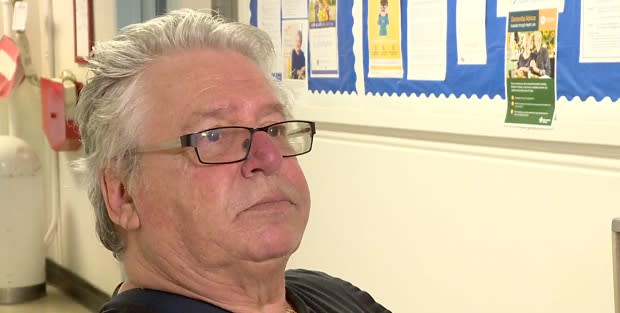COVID-19 'is threatening to us': Past epidemic leaves survivors at risk
It was an epidemic that thrived on crowds, targeted the vulnerable and had the viral might to close schools, shut down playgrounds and hold entire households hostage.
It wasn't, however, COVID-19 — it was poliomyelitis, aka polio.
And it's survivors today face a haunting déjà vu with this new pandemic.
"The coronavirus is threatening to us," says Terry Wiens.
Pat McNeill is more blunt; "I probably would not live if I got it."
Both of them are watching with weary eyes as this COVID-19 pandemic plays out. They've been down this viral road before.

McNeill contracted polio in 1947. Wiens got it in 1953.
In the first half of the 20th century, wave after wave of polio epidemics terrorized North American families
Manitoba was the hot spot.
Especially in 1953. That year alone, more than 2,300 Manitobans contracted polio. 85 of them died.

By the time the last epidemic had waned in 1956 (thanks to the mass introduction of a successful vaccine), tens of thousands of Canadians had contracted polio. 6,000 of them were from Manitoba.
'There's been something like this'
Polio had a lot in common with COVID-19.
"You see people today saying there's never been anything like this, but there's been something like this," says polio survivor Myrna Penner.

Like COVID-19, polio was highly contagious — though it spread through contaminated food and water, as opposed to respiratory droplets.
Like COVID-19, polio ravaged the vulnerable, though usually younger people rather than older adults.
And like COVID-19, the epidemic closed schools, theatres and churches.
"Many of the kids I knew were sent to the country, where there were fewer people, to live with a relative," McNeill recalls.
And still the virus spread.

Myrna Penner was a 10-year-old in Winkler, Man., at the time. "It went fairly quickly. It felt like the flu," she recalls. "A very bad headache and neck ache."
Wiens was a three-year-old in St.Boniface. "They thought I had the flu, too" he says. "They wasted seven days treating me for the flu."
More than a flu
The more pronounced symptoms, however, left no doubt in people's minds. Polio often destroyed nerve cells that controlled muscles, leaving some with paralyzed limbs or lungs.
"I got up and just crumbled to the floor. I couldn't walk," Penner recalls.

Pat McNeill was just two when she got sick.
"Both my legs and arms were paralyzed," McNeill says. "I was basically in and out of hospital until I was able to go to school."
Survivors were treated like pariahs.
"They put a sign on our house that said 'keep out of this house,'" recalls Wiens. "People would literally cross the street once they saw the sign on my house."
The memories remain.
"Imagine, you're in the hospital, you're five years old and you're watching them roll a kid up into a bundle and take them out on a stretcher," Wiens says. "Those kinds of things linger in the back of my head."
But today there's something more insidious than the memories of polio that defined their childhood.
Now COVID-19 threatens to hijack their senior years.
Post-polio syndrome
Many of them live with post-polio syndrome, a debilitating condition that picks up where the polio left off. And so the epidemic of their past now leaves them physically vulnerable to this newest epidemic.
"There's a lot of talk about how threatening the coronavirus is to post-polio people," Wiens says. "Because of the wear and tear on the body."
McNeill's now on oxygen around the clock — an unwelcome evolution of her post polio syndrome — and now feels like an open target for COVID 19.
"This sickness going around, it's really bothering me," McNeill says. "I can't risk getting it."
Both of them say they're adhering to protocols mandated this time around — they rarely venture out of their homes, they wash their hands and keep their distance.
But there is no end in sight to the immediate pandemic — and with never-ending memories of the earlier epidemic, polio survivors are bracing for the worst.
"There are so many similarities to what's going on now," Wiens says. "We weren't sure what was going to happen then. And we don't now."


